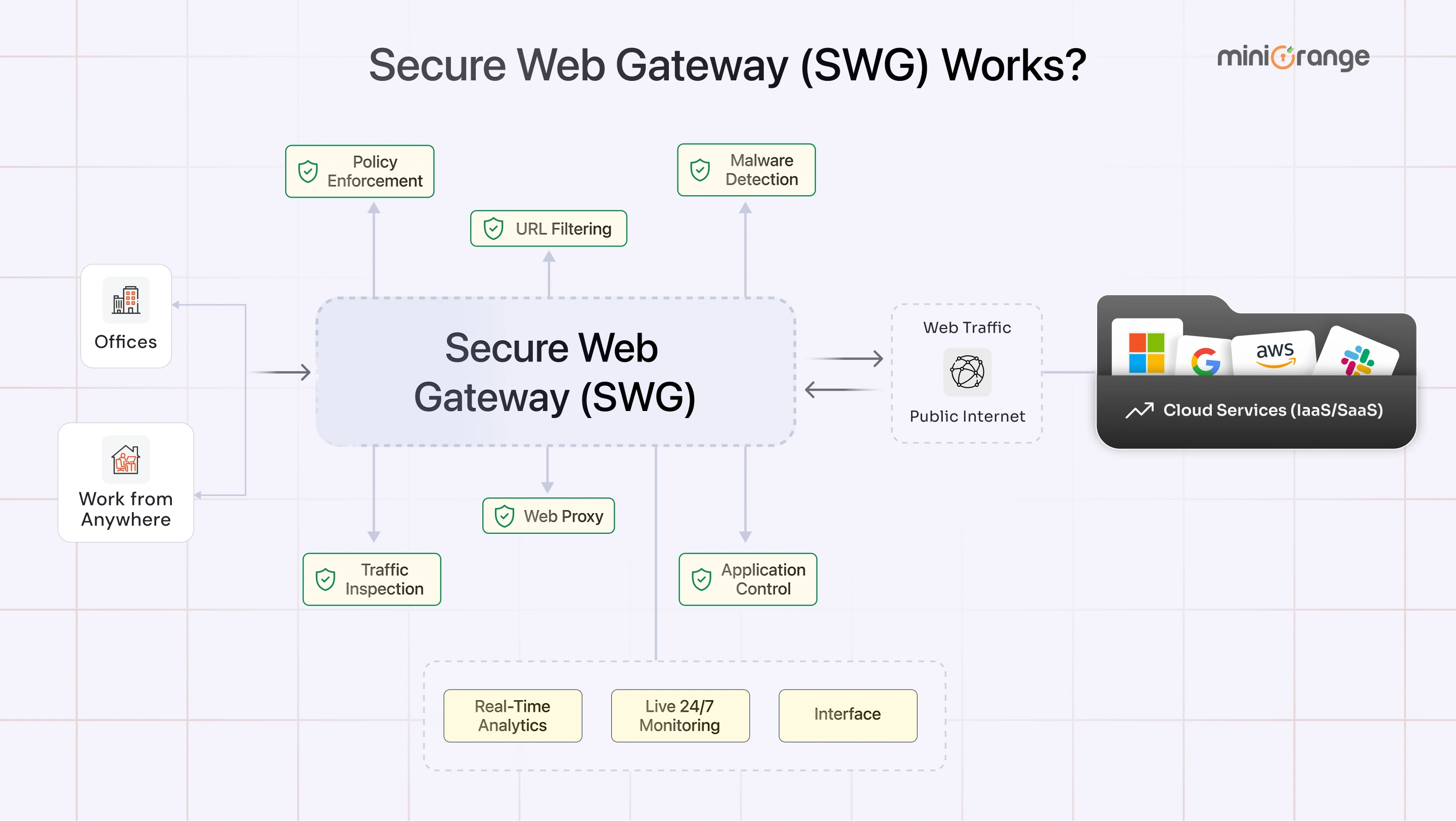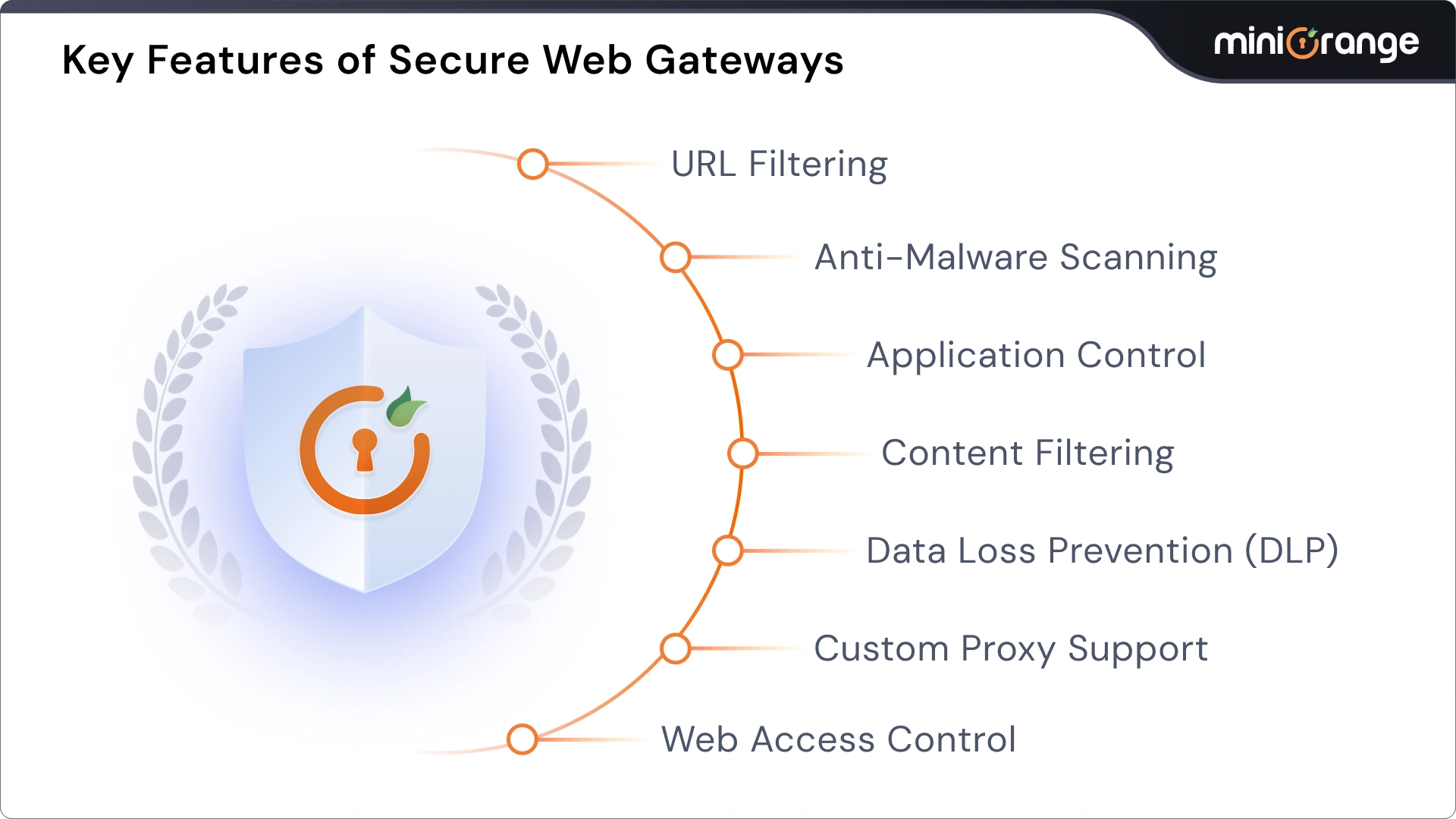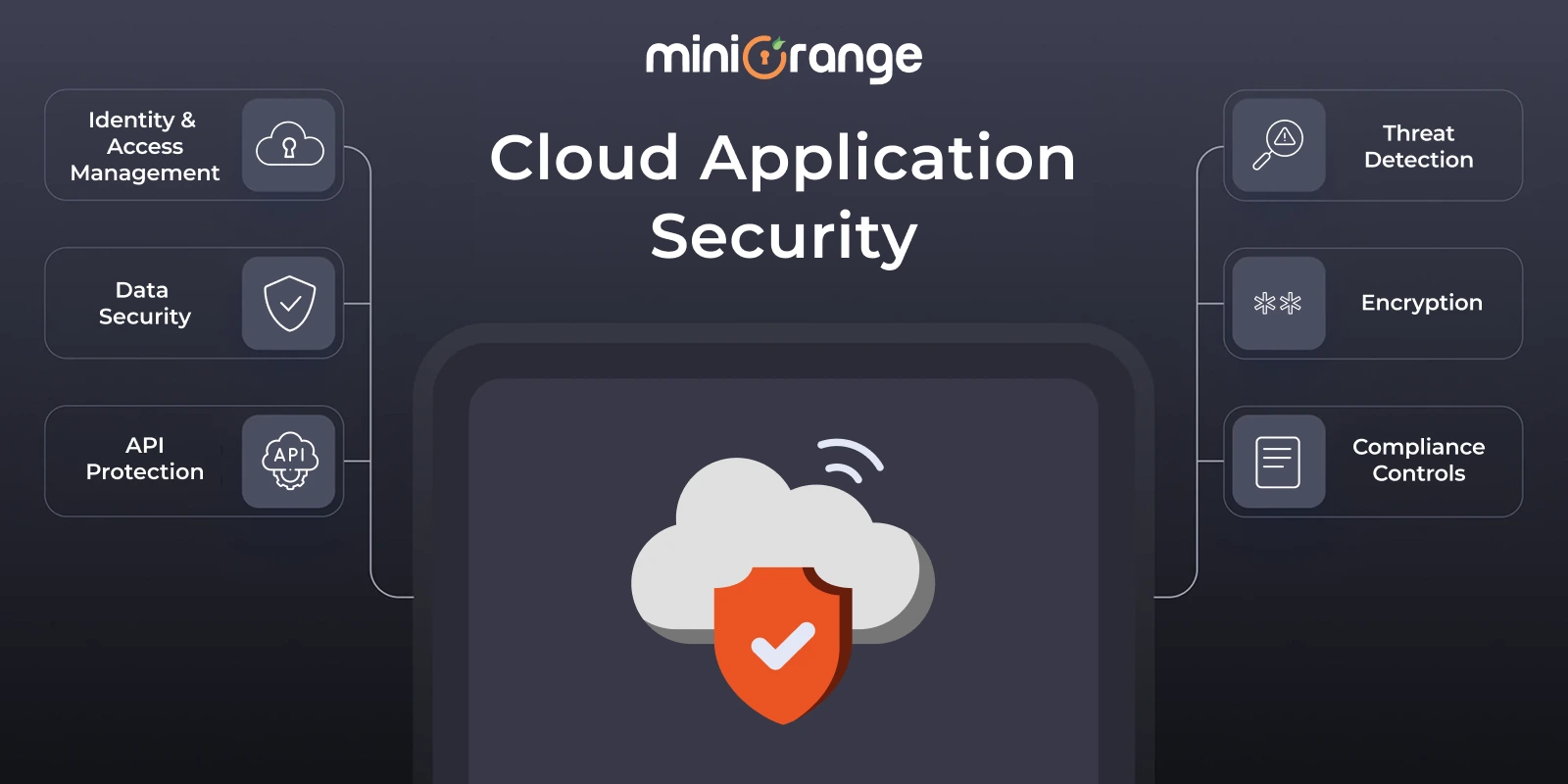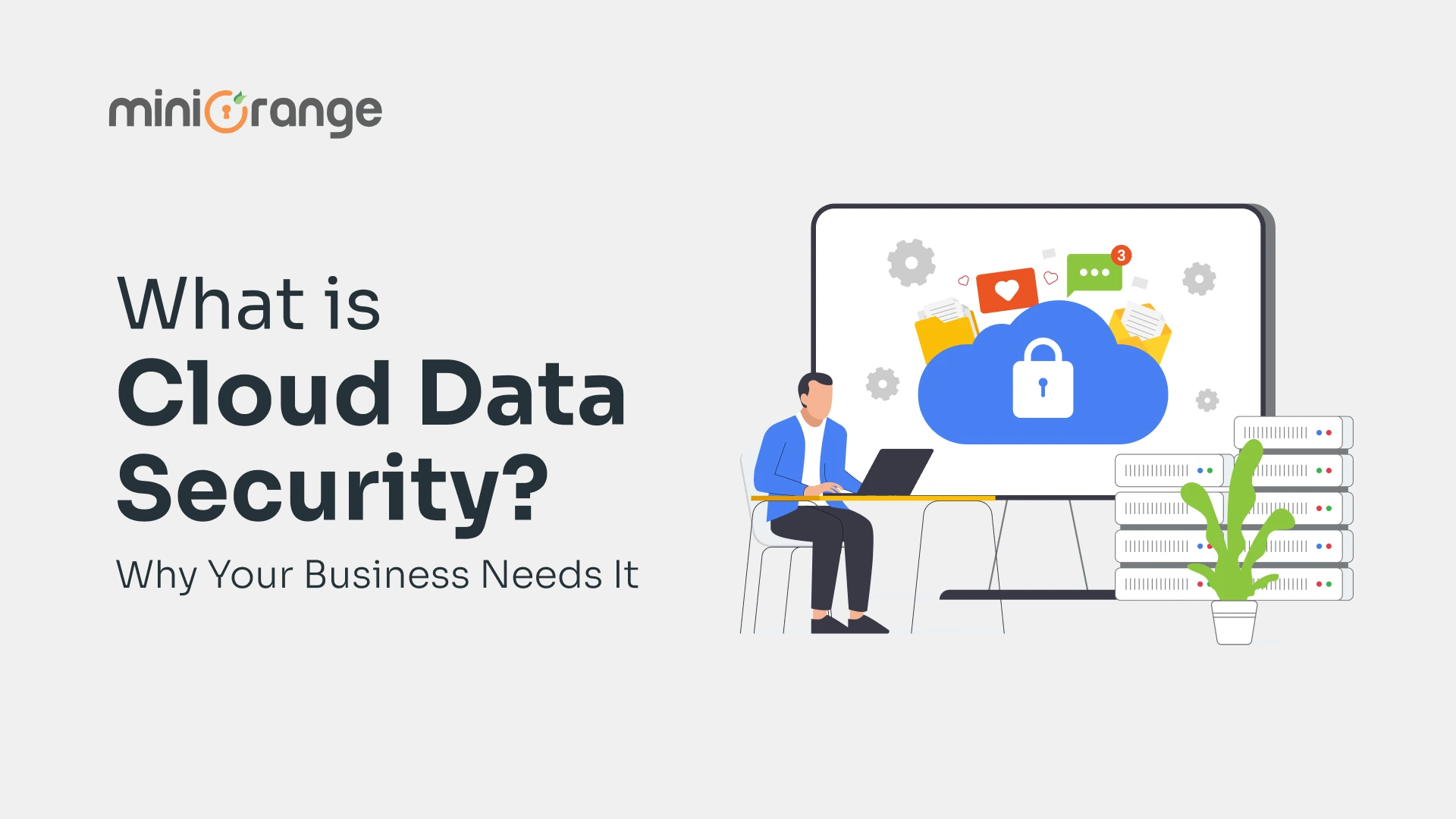Your sales rep logs into Salesforce from a hotel Wi-Fi. Your finance manager opens a file in Google Drive from your office network. Everything looks normal until a hidden phishing attack travels through the internet connection.
That’s how most modern breaches begin. In 2024, Proofpoint reported that 83% of organizations experienced a successful phishing attack.
Each connection (cloud app, device, or location) opens a new door. Traditional firewalls can’t see what’s inside your web traffic.
That’s why businesses are moving to Secure Web Gateways (SWGs).
Let’s find out more about SWG security.
What is Secure Web Gateway (SWG)?
A Secure Web Gateway (SWG) is a cybersecurity solution that inspects and filters out every piece of web traffic (both outbound and inbound) coming to your device. It blocks malicious content, prevents data leaks, and pushes safe browsing policies to ensure every request that leaves your network is checked and approved.
How Does a Secure Web Gateway Work?
A Secure Web Gateway solution inspects and filters all web traffic to make sure users access only safe, approved content.

Step 1: Outgoing Web Request Passes Through SWG
Whenever someone in your team tries to open a website or cloud app, that request doesn’t go straight to the internet.
It first passes through the Secure Web Gateway solution, which inspects URLs, IPs, and data packets before allowing access.
Step 2: Intercepting Web Requests
SWG then decrypts and analyzes data transfers that may expose business information and imposes security policies to block activities like visiting illegal content or using unsanctioned apps.
Step 3: Inspect Incoming Traffic and Policy Enforcement
When data or content comes from the internet, the SWG performs another round of inspection. This helps identify hidden threats, malware, or data leaks entering the corporate network.
Step 4: Protecting Remote and Hybrid Teams
Whether your employees work from the office, home, or halfway around the world, an SWG ensures they’re always protected.
By routing remote traffic through a cloud-based SWG solution, your security policies stay consistent, no matter the device, location, or network.
By routing all remote traffic through the SWG, businesses can:
- Push security policies for all users
- Protect endpoints even on unmanaged or public networks
- Prevent data breaches from external connections
Key Features of Secure Web Gateways
A Secure Web Gateway (SWG) features are designed to protect users, data, and applications from online threats. Let’s explore the most important ones in simple terms:
1. URL Filtering
Every time someone clicks a link, the SWG instantly checks where that link leads. If a site is known to be dangerous or doesn’t meet company policy, the SWG simply blocks access before it loads.
2. Anti-Malware Scanning
Before any data reaches your device, the SWG scans it for viruses, ransomware, and malicious code. It compares the data against known malware signatures, and if something looks suspicious, it’s blocked immediately and sends an alert to the security admins.
3. Application Control
Your teams rely on tools like Google Drive, Slack, and Microsoft 365, but not every cloud app is safe. For instance, anonymous file-shrinking sites or open-source PDF tools can cause accidental data leaks.
Through application-level visibility and CASB (Cloud Access Security Broker) software integration, the SWG identifies all apps (Microsoft 365, Google, Salesforce, and more) in use and applies smart security rules.
4. Content Filtering
SWG lets you create category-based content rules, from blocking adult or gambling sites to restricting social media during work hours.
5. Data Loss Prevention (DLP)
If content filtering stops bad data from getting in, DLP stops business data from getting out. This feature detects when confidential information, like credit card numbers, customer details, or trade secrets, is being sent outside the organization.
6. Custom Proxy Support
Not every company can switch to a cloud-based security setup right away. Custom proxy support lets businesses integrate an SWG into their existing IT or VPN infrastructure without disrupting ongoing operations.
7. Web Access Control
Web access isn’t just about who is trying to connect; it’s also about how, when, and from where the traffic is coming in and how to control it.
With web access control, the SWG checks:
- Is this user authorized?
- Are they using a trusted device?
- Are they logging in from an approved location?
Only if all conditions are met does the user gain access.

Business Benefits of Secure Web Gateways
Secure Web Gateway solution adds a critical layer of security and deference for modern businesses.
Here are the advantages of SWG that help your business every day:
1. Strong Protection Against Online Threats
SWGs continuously inspect web traffic and block suspicious links or downloads before they can harm your network or users.
2. Centralized Security for All Devices
Managing security across multiple locations and devices can get complicated and expensive. An SWG simplifies this by offering centralized policy management. Admins can create and enforce the same web access rules for everyone, regardless of which network their devices are connected to.
3. Fewer Data Breaches with DLP & Access Control
With built-in Data Loss Prevention (DLP) and access controls, an SWG ensures that confidential data stays protected, and only authorized users can access critical resources.
4. Better Productivity Through Smart Access Controls
SWGs help teams stay productive by blocking non-work or time-wasting websites like social media or streaming platforms during work hours.
5. Easier Compliance and Audit Readiness
Meeting data privacy and security regulations can be challenging.
SWGs simplify compliance with audit-ready reports, helping organizations easily demonstrate adherence to policies like GDPR or HIPAA.
6. Works with SASE and Zero Trust Models
A modern SWG (Secure Web Gateway) integrates smoothly with SASE (Secure Access Service Edge) and Zero Trust architectures, creating a unified, cloud-based security framework.
Challenges in Secure Web Gateway Deployment
1. Limited Control Over Unmanaged Devices
An SWG can only protect what it can see. If employees or third-party users connect using personal or unregistered devices, those systems might bypass inspection completely.
2. Performance Trade-Offs During Traffic Inspection
SWGs decrypt and inspect traffic (SSL/TLS). While necessary, this process can increase processing load and slow down cloud app performance if not tuned properly.
3. Users Trying to Bypass Restrictions
Whenever access to certain sites or content is blocked, some users may look for ways around it by using mobile hotspots, unsecured proxies, or personal devices.
4. Limited Visibility Without Device Context
An SWG that monitors traffic without understanding the device’s security posture operates with half the picture. It may allow risky access from outdated devices or block legitimate users unnecessarily. Both scenarios create operational noise and frustration for IT teams.
Deployment Models of Secure Web Gateway (SWG)
| Deployment Model | When It Shines | Operational Advantage | Reality Check |
|---|---|---|---|
| Cloud-Based SWG | Ideal for remote-first and SaaS-heavy businesses. | Faster inspection via nearest PoP, less VPN reliance. | Performance depends on PoP proximity and SaaS peering. |
| On-Premise SWG | Best for regulated industries (finance, healthcare). | Full control and integration with internal systems. | Remote access can cause latency; scaling is hardware-based. |
| Hybrid SWG | For enterprises mixing on-prem and cloud workloads. | Combines flexibility and compliance with resilience. | Harder to keep policies consistent across environments. |
How to Choose the Right SWG for Your Organization
Selecting a Secure Web Gateway (SWG) isn’t just about finding the most feature-rich product, it’s about finding one that truly fits your network, security needs, and user behavior.
1. Complete Traffic Visibility
Selecting a Secure Web Gateway (SWG) isn’t just about ticking the right feature boxes; it’s about aligning with your business architecture, users, and security priorities.
2. Granular Policy Control
Look for SWGs that allow fine-grained access control based on user identity, device type, and security posture, not just IP address or location.
3. Integration with Identity Providers
An effective SWG should connect easily with your existing identity and access management (IAM) setup.
4. Flexible Deployment Options
Choose an SWG that supports cloud, on-premises, and hybrid deployments, so you can align it with your current setup and scale easily as your business evolves.
5. Detailed Reporting and Forensics
A good SWG should make it easy to generate compliance-ready reports and detailed logs for incident investigation.
Pro Tip: Before finalizing a solution, consider running a pilot deployment to see how the SWG performs with real traffic and user behavior.
How miniOrange Keeps Web Traffic Secure
Modern businesses need more than simple web filtering. They need security that understands who’s connecting, from where, and on what device, without disrupting productivity. miniOrange SWG brings together identity-aware policies, real-time traffic inspection, and adaptive access controls to keep users safe wherever they work.
Here’s how miniOrange makes it happen:
- Category-based web control: Block risky sites while keeping essential tools open and accessible.
- Whitelisting app: Legitimate business apps always run smoothly, even during strict policy enforcement.
- Cloud app restrictions: Limit access to approved accounts and prevent sensitive data from moving to unauthorized cloud services.
- Device and user context: miniOrange continuously checks who’s accessing what, and from which device, aligning with Zero Trust principles.
- Easy integration: Works with your existing identity and access management setup, so you can manage web traffic and user access in one place.
Final Thoughts
A Secure Web Gateway (SWG) isn’t just a nice-to-have; it’s a core part of a modern cybersecurity strategy. It protects users from online threats, keeps sensitive data from leaking, and helps organizations stay compliant without slowing down productivity.
Whether your team is fully remote, hybrid, or transitioning to the cloud, Secure Web Gateway gives you the visibility, control, and real-time protection your network needs, all managed through a simple, cloud-based console.
Frequently Asked Questions (FAQs)
1. What is Secure Web Gateway?
Secure Web Gateway is a security solution that protects users from online threats by monitoring and controlling web traffic.
2. What is the purpose of SWG?
The main purpose of an SWG is to protect organizations from web-based threats and enforce safe browsing policies. It helps IT teams control which sites employees can visit, blocks malicious downloads, and prevents sensitive data from leaving the network.
3. What are the objectives of a Secure Web Gateway?
A Secure Web Gateway is built to achieve key objectives like blocking cyber threats such as malware, ransomware, and phishing attacks, enforcing web usage policies, protecting sensitive data, and providing visibility and reporting for compliance.
4. Is a Secure Web Gateway a Firewall?
While both provide network protection, they serve different purposes. A firewall focuses on controlling traffic between internal and external networks, while a Secure Web Gateway analyzes web traffic content, user behavior, and application access.
5. What is the role of secure web gateways in SASE?
In a SASE setup, a Secure Web Gateway (SWG) keeps users safe online. It checks web traffic, blocks harmful sites, and stops data leaks.








Leave a Comment